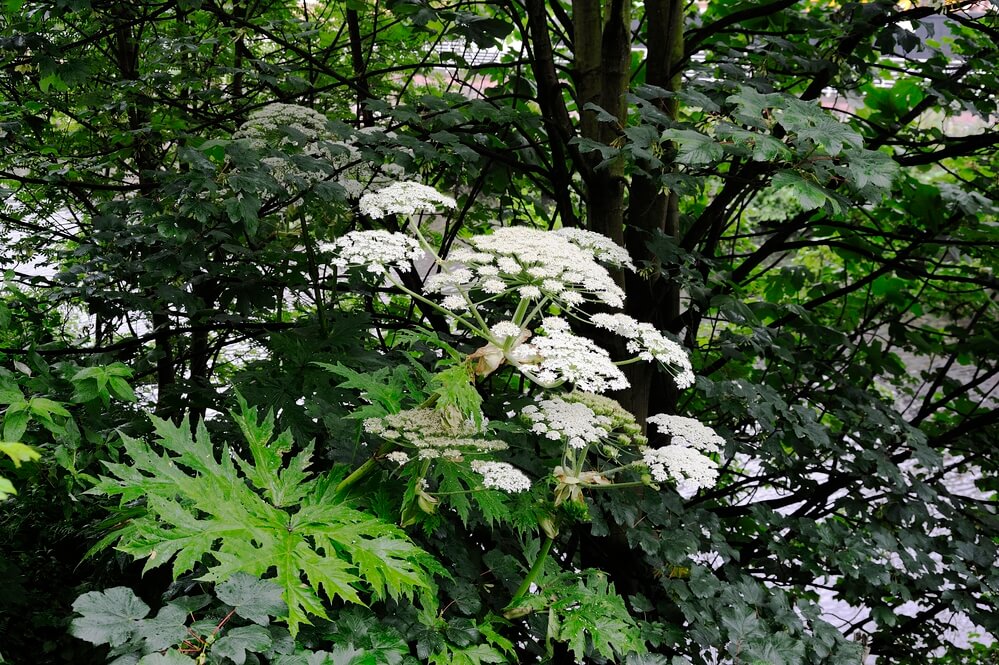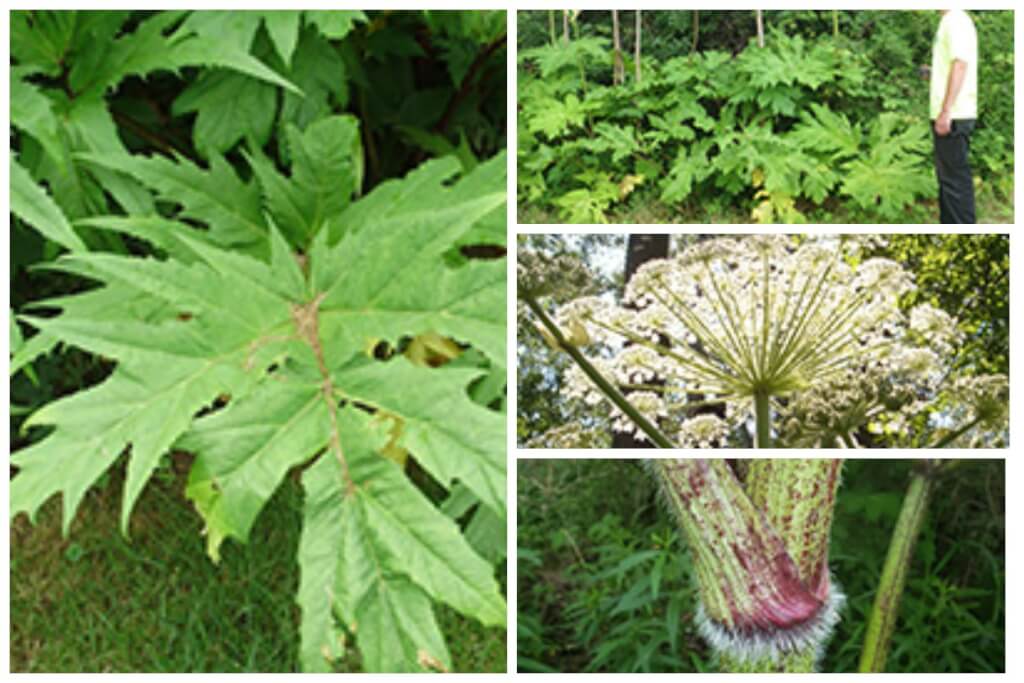Severe burns and terrible scars: New Yorkers are warned of a dangerous plant
The New York State Department of Conservation has warned residents of the region that it is now the flowering season of a dangerous poisonous plant - giant hogweed, which can severely burn the skin and leave ugly scars, writes Newsweek.

Фото: Depositphotos
Although the department reported that it had made “substantial progress” in the fight against the giant cow parsnip, Commissioner Basil Seggos warned that the threat is still very real.
In a statement, he urged New Yorkers to be vigilant and report plants to the Department of Conservation, especially over the next few weeks, when plants begin to bloom and become more visible.
Mantegatstsi Hogweed (Heracleum mantegazzianum), popularly known as the giant hogweed, is a very large green plant, crowned with clusters of small white flowers. During flowering, individual plants can reach heights from 8 to 14 feet (from 2,4 to 4,30 meters). Their leaves can reach one and a half meters in length.
On the subject: Toxic algae in Florida: what you need to know and how to protect yourself
The sap of the plant, which does not cause discomfort upon contact, ultimately makes the skin more sensitive to sunlight - exposure to the sun after contact with hogweed can cause blisters and serious burns. Typically, skin becomes most sensitive to sunlight 2 hours after exposure to the juice. But she can become sensitive within 15 minutes of touching the plant. Injuries usually develop within 24-48 hours of contact with the plant.
Anyone who touches Hogweed should immediately wash the affected area with soap and water and seek shelter from the sun. Staying indoors so that the sun does not fall on your skin is recommended for several days. If the sap of the plant gets into your eyes, you should rinse them with water and wear sunglasses. If you suspect that you have burned a hogweed, you should immediately consult a doctor.

Collage: ForumDaily
Burns and blisters from them usually heal within a few months, but in some cases this process takes a longer period.
This plant is originally from Russia and Georgia. According to the nonprofit Agricultural Center and Bioscience International, it spread throughout Europe and North America after being transported as an ornamental plant.
On the subject: Do not touch: Florida residents are warned about dangerous trees
Today, the giant hogweed is found in several US states outside of New York, including Washington, Michigan and New Jersey.
According to officials, in June 2018, a giant hogweed was first seen in Virginia. About a month later, the teenager received serious burns after he unknowingly cut down the plant.
In New York, the plant is most commonly found in the central and western regions of the state. Although it prefers areas with abundant light and wet soil, it also occurs in darker areas. The giant hogweed can be found along streams and rivers, open fields, woodlands, yards, gardens and roadsides anywhere in the state.
In New York, officials are confident that they are successfully fighting a large population of the giant hogweed. With the help of local partners, the DEC Giant Hogweed program has made great strides in removing this dangerous plant from the residential areas of New York.
According to the latest annual report, 2018 destroyed thousands of plants at a 678 facility as part of a campaign in 1271.
On the subject: Study: a trip to the subway in New York may increase the risk of cancer
For twelve years, the Giant Hogweed program has cleared the 623 site where Hogweed grew up in the state. 118 of these sites have only recently been declared clean of a poisonous plant. 448 plots are free from plants, but do not yet meet all the criteria to declare them safe.
Currently, 2 sites with hogweed are recorded in the state, of which 484 are under observation or in the process of treatment, 1 were only recently discovered, and work there has not yet begun.
About 84% of these sites are thought to have fewer than 100 plants. On 205 - from 100 to 399, and on 203 - more than 400.
The Department of Conservation is asking New Yorkers who think they have spotted hogweed to email [email protected], text 518-320-0309 or call the Giant Hogweed Information Line at 1-845-256-3111. Last year, the Department received about two and a half thousand messages.
The department stressed that submitting photos and addresses of the location of poisonous plants is the “most important thing” members of the public can do to support hogweed eradication efforts.
Although the ability to get burned is frightening, it must be remembered that the plants do not move, and people can safely identify the giant hogweed and report it without contacting the plant.
Read also on ForumDaily:
Toxic algae in Florida: what you need to know and how to protect yourself
Do not touch: Florida residents are warned about dangerous trees
Venomous snakes began to attack more often: Florida and Texas at risk
Study: a trip to the subway in New York may increase the risk of cancer
Subscribe to ForumDaily on Google NewsDo you want more important and interesting news about life in the USA and immigration to America? — support us donate! Also subscribe to our page Facebook. Select the “Priority in display” option and read us first. Also, don't forget to subscribe to our РєР ° РЅР ° Р »РІ Telegram and Instagram- there is a lot of interesting things there. And join thousands of readers ForumDaily New York — there you will find a lot of interesting and positive information about life in the metropolis.











